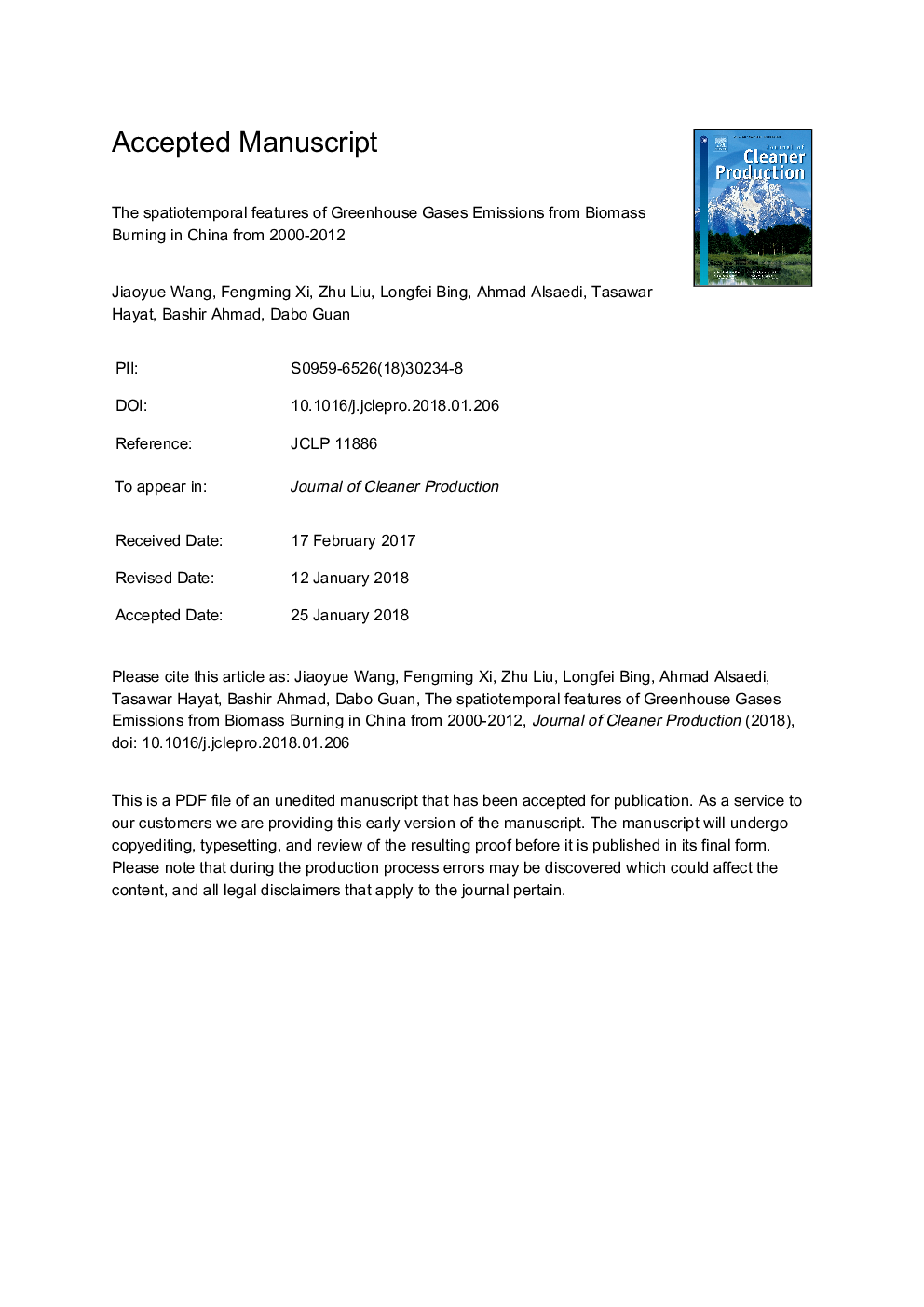| کد مقاله | کد نشریه | سال انتشار | مقاله انگلیسی | نسخه تمام متن |
|---|---|---|---|---|
| 8097805 | 1522072 | 2018 | 32 صفحه PDF | دانلود رایگان |
عنوان انگلیسی مقاله ISI
The spatiotemporal features of greenhouse gases emissions from biomass burning in China from 2000 to 2012
ترجمه فارسی عنوان
ویژگیهای فضایی زمانبندی انتشار گازهای گلخانه ای از سوختگی زیست توده در چین از سال 2000 تا 2012
دانلود مقاله + سفارش ترجمه
دانلود مقاله ISI انگلیسی
رایگان برای ایرانیان
کلمات کلیدی
انتشار گازهای گلخانه ای، سوختن زیست توده، سوخت های زیستی، باز سوزاندن،
موضوعات مرتبط
مهندسی و علوم پایه
مهندسی انرژی
انرژی های تجدید پذیر، توسعه پایدار و محیط زیست
چکیده انگلیسی
Greenhouse gases emissions from biomass burning have been given a little attention, especially the spatiotemporal features of biomass burning sources and greenhouse gases emissions have not been comprehensively uncovered. This research undertook IPCC bottom-up inventory guideline to estimate Chinese greenhouse gases emissions from biomass burning and applied geographical information system to reveal biomass burning emissions spatiotemporal features. The purposes were to quantify greenhouse gases emissions from various biomass burning sources and to uncover the spatial and temporal emissions features so to deliver future policy implications in China. The results showed that the average annual biomass burning emissions in China from 2000 to 2012 were 880.66â¯Mt for CO2, 96.59â¯Mt CO2-eq for CH4, and 16.81â¯Mt CO2-eq for N2O. The spatial pattern of biomass greenhouse gases emissions showed about 50% of national emission were in the east and south-central regions. The majority of biomass burning emissions were from firewood and crop residues, which accounted for more than 90% of national biomass burning emissions. All types of biomass burning emissions exhibited similar temporal trends from 2000 to 2012, with strong inter-annual variability and fluctuant increase. The large grassland and forest fires induced the significant greenhouse gases emissions peaks in the years of 2001, 2003 and 2006. We found that biofuel burning, with low combustion efficiency, is the major emission source. Open burning of biomass was widespread in China, and east and south-central regions were the major distribution of biomass burning greenhouse gases emission. Optimized design for improving the efficiency of biomass utilization and making emission control policy combination with its spatiotemporal features will be the effective way to reduce the biomass burning emissions.
ناشر
Database: Elsevier - ScienceDirect (ساینس دایرکت)
Journal: Journal of Cleaner Production - Volume 181, 20 April 2018, Pages 801-808
Journal: Journal of Cleaner Production - Volume 181, 20 April 2018, Pages 801-808
نویسندگان
Jiaoyue Wang, Fengming Xi, Zhu Liu, Longfei Bing, Ahmed Alsaedi, Tasawar Hayat, Bashir Ahmad, Dabo Guan,
